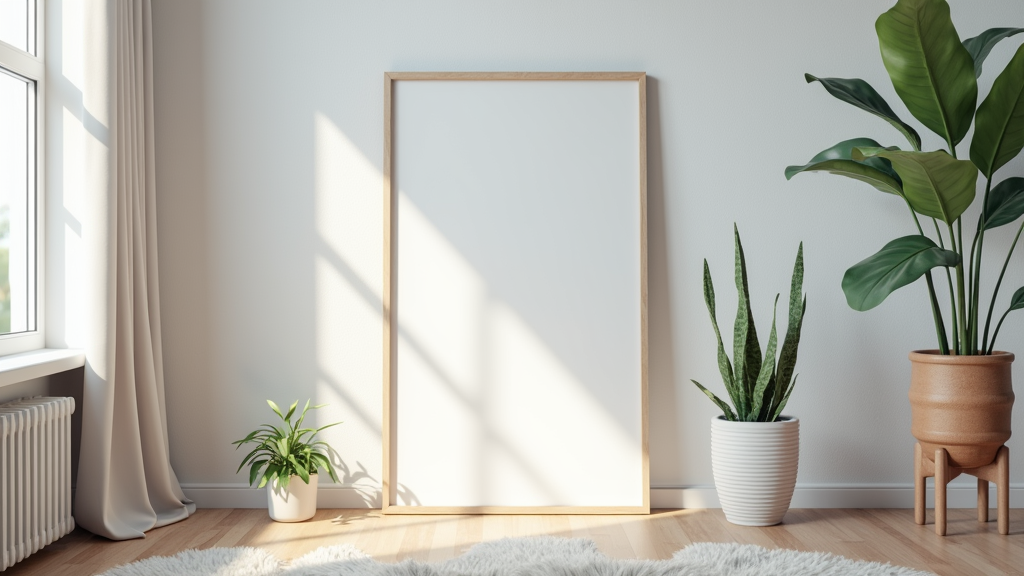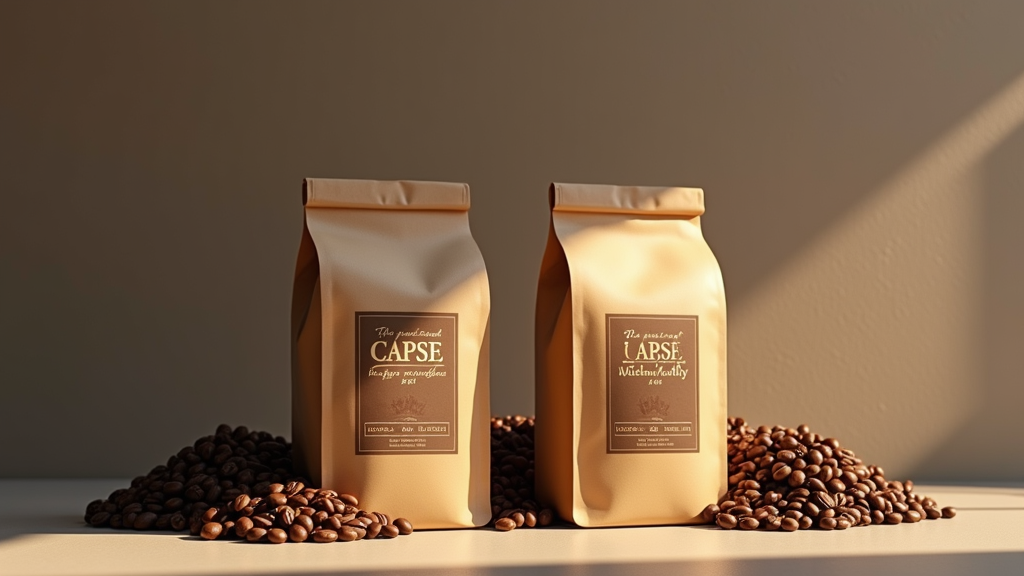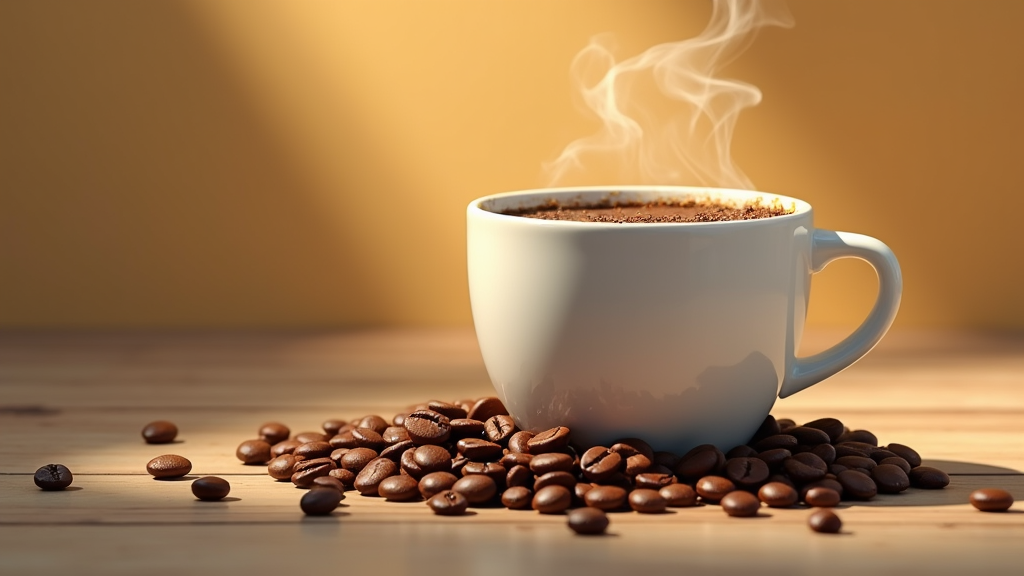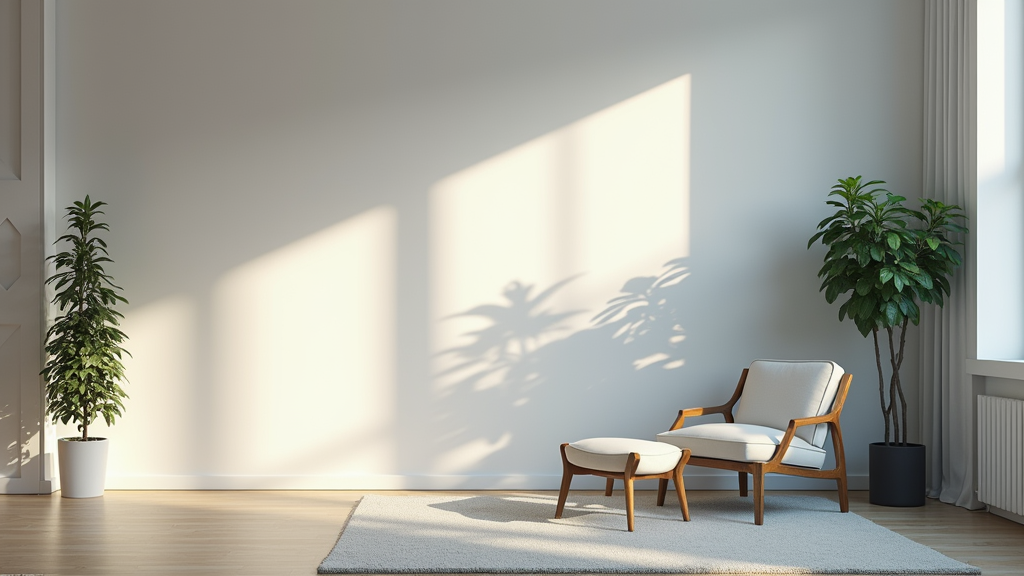Table of Contents
- Introduction
- Understanding Decaf Coffee
- Top Specialty Decaf Coffee Brands
- Best Overall: Liberty Beans Coffee Decaf
- Best Tasting: Starbucks Caffé Verona Coffee
- Best Comfort: Kicking Horse Decaf Dark Roast
- Best Budget: Seattle’s Best Coffee Decaf Portside Blend
- Best Organic: Café Don Pablo Subtle Earth Organic Coffee
- Best Low Acid: Lifeboost Organic Medium Roast Decaf
- Best Coffee Pods: Keurig’s Original Donut Shop Decaf K-Cup Pods
- Best Light Roast: Green Mountain Coffee Roasters Breakfast Blend Decaf Coffee
- Best Medium Roast: Volcanica Coffee Company House Decaf Coffee
- Best Dark Roast: Peet’s Major Dickason’s Dark Roast Decaf Coffee
- Best High-End: Atlas Coffee Club Decaf Coffee
- Best Instant Coffee: Mount Hagen Organic Freeze-Dried Instant Decaf Coffee
- Best Espresso: Lavazza Dek Whole Bean Decaf Coffee
- Best Swiss Water Process: Verena Street Sunday Drive Swiss-Water-Process
- Best Pre-Ground: Smooth Jo Decaf
- Brewing Techniques to Enhance Flavor
- Evaluating Decaf Coffee
- Health Benefits and Considerations
- Conclusion
Introduction

The Appeal of Specialty Decaf Coffee
In recent years, the demand for coffee that delivers exceptional flavor without the caffeine jitters has surged, giving rise to the popularity of specialty decaf coffee. No longer relegated to a bland afterthought, decaf has evolved into a premium coffee experience that caters to a growing audience.
Specialty decaf offers the best of both worlds: the rich aromas, complex flavors, and satisfying body of high-quality coffee, all without the stimulating effects of caffeine. This makes it an ideal choice for individuals who are sensitive to caffeine, those who enjoy a cup in the evening without disrupting their sleep, or anyone simply looking to reduce their daily caffeine intake without sacrificing their love for coffee.
What You’ll Discover
In this guide, we’ll delve into the fascinating world of specialty decaf coffee, uncovering the secrets behind its exceptional taste and exploring the best brands that are leading the way. We’ll explore what factors contribute to a truly great-tasting decaf coffee, from bean selection and decaffeination methods to roasting profiles.
Furthermore, we’ll provide you with practical tips and brewing techniques to help you maximize the flavor potential of your decaf beans, ensuring that every cup is a delightful and satisfying experience. Get ready to discover the world of decaf like never before!
Understanding Decaf Coffee
What is Decaf Coffee?
Decaf coffee is, at its core, coffee that has undergone a process to significantly reduce its caffeine content. While it’s not entirely caffeine-free, decaf coffee typically contains only 1-2% of the caffeine found in regular coffee beans. This makes it an appealing option for those who love the taste and ritual of coffee but want to avoid the stimulating effects of caffeine.
Importantly, decaf coffee is designed to maintain flavor profiles that are similar to regular coffee. A well-crafted decaf should offer a rich and satisfying experience, allowing you to enjoy the nuances of different coffee origins and roasts without the jitters. This makes it a great choice for health-conscious consumers, those sensitive to caffeine, or anyone who enjoys an evening cup without disrupting their sleep.
The Decaffeination Process
The magic behind decaf coffee lies in the decaffeination process itself. Several methods are used to remove caffeine from coffee beans, each with its own advantages and potential impact on the final flavor. Two of the most common approaches are solvent-based methods and the Swiss Water Process.
<strong>Solvent-Based Methods:</strong> These methods typically use either methylene chloride or ethyl acetate to extract caffeine from the coffee beans. While concerns about chemical residues are sometimes raised, the FDA closely regulates these processes to ensure safety. The amount of residual solvent, if any, is minimal and considered harmless. However, some coffee drinkers prefer to avoid even trace amounts of chemicals.
- Potential for chemical traces
<strong>Swiss Water Process:</strong> This method is a chemical-free alternative that relies on water and osmosis to remove caffeine. The beans are soaked in water, which is then passed through a charcoal filter to trap the caffeine molecules. This caffeine-free water is then used to soak subsequent batches of beans, drawing out the caffeine while preserving the coffee’s natural flavors and aromas.
- Uses water and osmosis; chemical-free
- Preserves richer flavor profile
The decaffeination method can indeed impact the taste of the final product. The Swiss Water Process is often favored for its ability to retain a richer, more complex flavor profile compared to some solvent-based methods.
Factors Contributing to Great Taste
Just like regular coffee, the taste of decaf coffee is influenced by several factors, including the origin of the beans, the roast level, and the freshness of the coffee.
<strong>Origin:</strong> The origin of the coffee beans plays a significant role in the final flavor. For example, decaf Colombian coffees are known for their bright acidity and fruity notes, while Ethiopian varieties often exhibit floral and citrusy characteristics. Exploring different origins can lead to exciting discoveries in the world of decaf.
- Influences flavor; e.g., Colombian coffees are bright and fruity
- Ethiopian varieties have floral and citrus notes
<strong>Roast Level:</strong> The roast level also significantly affects the flavor intensity. Light roasts tend to retain more of the original flavors of the beans, offering a delicate and nuanced cup. Dark roasts, on the other hand, offer bolder, more intense flavors with smoky and chocolatey notes.
- Affects flavor intensity
- Light roasts retain original flavors
- Dark roasts offer bolder tastes
<strong>Freshness:</strong> Finally, freshness is paramount. Like any coffee, decaf coffee tastes best when consumed within two weeks of roasting. After this period, the flavors begin to fade, and the coffee may become stale. Look for roasters who provide roast dates to ensure you’re enjoying the freshest possible cup.
- Consume within two weeks of roasting for optimal flavor
Top Specialty Decaf Coffee Brands

Top Specialty Decaf Coffee Brands
For those who love the taste of coffee but want to avoid caffeine, the world of decaf has evolved far beyond the bitter, bland options of the past. Today, you can find specialty decaf coffees that rival their caffeinated counterparts in flavor and complexity. Here’s a guide to some of the best decaf coffee brands, each offering a unique and satisfying experience.
Best Overall: Liberty Beans Coffee
Liberty Beans Coffee Decaf stands out as a top choice for its exceptional quality and flavor profile. Sourced from single-origin beans in Central America, these 100% Arabica beans are hand-roasted to perfection. The result is a dark roast with delightful caramel and nutty undercurrents. Additionally, Lifeboost is known for its low acidity, making it gentle on the stomach.
Best Tasting: Starbucks Caffé Verona Coffee
Starbucks Caffé Verona is a decaf option that doesn’t compromise on flavor. This coffee is full-bodied with rich flavors that appeal to a wide range of palates. You’ll notice notes of caramel, dark chocolate, nut, and toffee in every sip. Its multi-origin blend includes beans from Asia, the Pacific, and Latin America, creating a complex and satisfying cup.
Best Comfort: Kicking Horse Decaf Dark Roast
Kicking Horse Decaf Dark Roast is perfect for those seeking a comforting and reliable decaf option. This coffee uses the Swiss Water Processing method to remove caffeine, ensuring a clean and pure flavor. The beans are sourced from Central and South America, offering a rich and bold taste that’s perfect for any time of day.
Best Budget: Seattle’s Best Coffee Decaf Portside Blend
For a budget-friendly option that doesn’t skimp on quality, Seattle’s Best Coffee Decaf Portside Blend is an excellent choice. This medium roast offers a well-rounded, robust texture that’s both satisfying and affordable. Sourced from Latin America, it provides a smooth and enjoyable coffee experience without breaking the bank.
Best Organic: Café Don Pablo Subtle Earth Organic Coffee
Café Don Pablo Subtle Earth Organic Coffee is an excellent choice for those who prefer organic options. This 100% Arabica, organic blend offers a delightful flavor profile with notes of milk chocolate, honey, and fruit, balanced by a strong bitter hit. It’s also Fair Trade certified and GMO-free by CCOF, ensuring ethical and sustainable practices.
Best Low Acid: Lifeboost Organic Medium Roast Decaf
Another standout from Lifeboost, the Organic Medium Roast Decaf offers a rich, deep flavor profile with notes ranging from chocolate to fruity. Sourced from Nicaraguan smallholder farms in Central America, this coffee is carefully roasted to maintain its low acidity, making it a great choice for those with sensitive stomachs.
Best Coffee Pods: Keurig’s Original Donut Shop Decaf K-Cup Pods
For convenience and a familiar taste, Keurig’s Original Donut Shop Decaf K-Cup Pods are a solid choice. These pods offer an intense aromatic quality similar to regular coffee, making it a satisfying option for Keurig users. The beans are sourced from over thirty countries, including Central America, Columbia, East Africa, and Indonesia, creating a well-balanced blend.
Best Light Roast: Green Mountain Coffee Roasters Breakfast Blend Decaf Coffee
If you prefer a lighter roast, Green Mountain Coffee Roasters Breakfast Blend Decaf Coffee is a great option. This medium roast offers strong elements of fruit and hazelnut, creating a bright and cheerful cup. The beans are sourced from 30 countries, including Brazil, Colombia, Ethiopia, Guatemala, Honduras, India, Indonesia, Mexico, Rwanda, and Uganda, ensuring a diverse and flavorful blend.
Best Medium Roast: Volcanica Coffee Company House Decaf Coffee
Volcanica Coffee Company House Decaf Coffee is a superb choice for those who enjoy a balanced medium roast. Its flavor profile includes notes of fruit, nut, chocolate, hazelnut, and caramel, creating a complex and satisfying cup. The well-balanced bitter palette with hints of sugar makes it a delightful option for any time of day.
Best Dark Roast: Peet’s Major Dickason’s Dark Roast Decaf Coffee
For those who love a bold and intense flavor, Peet’s Major Dickason’s Dark Roast Decaf Coffee is an excellent pick. This dark roast offers smoky, spicy traces and a robust, bold taste that stands up to any craving. It’s a decaf option that doesn’t compromise on the rich and intense flavors of a dark roast.
Best High-End: Atlas Coffee Club Decaf Coffee
If you’re looking for a premium decaf experience, Atlas Coffee Club Decaf Coffee is worth considering. This single-origin coffee is sourced from Ethiopia and artfully roasted to order, ensuring maximum freshness and flavor. It’s a high-end option that offers a unique and exceptional coffee experience.
Best Instant Coffee: Mount Hagen Organic Freeze-Dried Instant Decaf Coffee
For those who need a quick and easy option, Mount Hagen Organic Freeze-Dried Instant Decaf Coffee is a great choice. This medium roast offers sweet caramel tones and is incredibly convenient to prepare. Sourced from Papua New Guinea, it’s a reliable and tasty instant decaf option.
Best Espresso: Lavazza Dek Whole Bean Decaf Coffee
Lavazza Dek Whole Bean Decaf Coffee is perfect for espresso lovers who want to enjoy their favorite drink without the caffeine. Its flavor palette includes notes of hazelnut and roasted cereal, creating a rich and satisfying espresso. Sourced from Brazil and Vietnam, it’s a versatile option for various brewing methods.
Best Swiss Water Process: Verena Street Sunday Drive Swiss-Water-Process
Verena Street Sunday Drive Swiss-Water-Process offers a multi-origin, medium roast that’s both rich and smooth. This decaf coffee uses the Swiss Water Process to remove caffeine, ensuring a clean and pure flavor. Its full-bodied flavor makes it a delightful option for a relaxing Sunday morning.
Best Pre-Ground: Smooth Jo Decaf
For convenience and a bold flavor, Smooth Jo Decaf is an excellent pre-ground option. This dark French roast offers notes of dark chocolate and cherry, creating a rich and indulgent cup. It’s a great choice for those who appreciate a strong, flavorful decaf without the hassle of grinding beans.
Brewing Techniques to Enhance Flavor
French Press
**Key Takeaway:** Different brewing methods like French Press, Pour-Over, and Espresso require specific grind sizes, water temperatures, and techniques to optimize flavor extraction. Mastering these nuances—coarse grind for French Press and Pour-Over, fine grind and high pressure for Espresso—unlocks the full potential and unique characteristics of each brew.
The French press is a beloved brewing method celebrated for its simplicity and ability to produce a full-bodied, rich cup of coffee. Its design allows for a longer steeping time, which significantly enhances flavor extraction. This extended contact between the water and coffee grounds draws out a wider range of oils and compounds, resulting in a bolder, more complex flavor profile.
To achieve the best results with a French press, it’s crucial to use a coarse grind. A coarse grind prevents the coffee from becoming over-extracted and ensures that the grounds are easily filtered by the mesh screen. A finer grind can lead to a muddy, bitter brew.
Steeping time is another critical factor. A standard steeping time for a French press is around 4 minutes. This duration allows for optimal flavor development without over-extraction. After steeping, gently press the plunger down to separate the grounds from the coffee, and then serve immediately to enjoy the full-bodied flavor.
Pour-Over
The pour-over method offers a more controlled and nuanced approach to brewing coffee, giving you greater command over the final taste. This technique requires a bit of finesse but rewards you with a clean, bright cup that highlights the coffee’s unique characteristics.
Similar to the French press, a coarsely ground coffee is recommended for pour-over brewing. The coffee grounds should be saturated evenly, typically using a circular pouring motion. This ensures that all the grounds are properly extracted, leading to a balanced and flavorful brew.
Water temperature is also key. The ideal water temperature for pour-over brewing is between 200-205°F (93-96°C). This temperature range allows for optimal extraction without scalding the coffee, which can lead to a bitter taste.
The “bloom” is an essential step in the pour-over process. Before beginning the full pour, saturate the grounds with a small amount of hot water and allow them to bloom for about 30 seconds. This allows the coffee to degas, releasing trapped carbon dioxide and preparing the grounds for optimal extraction.
Espresso
Espresso brewing stands apart due to its precision and intensity. This method uses pressure to force hot water through finely ground coffee, resulting in a concentrated shot of coffee with a rich crema.
The grind size for espresso is critical; a fine grind is essential to create the necessary resistance against the pressurized water. This resistance allows for proper extraction, resulting in the desired flavor and body.
Pressure is the defining characteristic of espresso brewing. An espresso machine typically applies around 9 bars of pressure to force the hot water through the coffee grounds. This high pressure extracts the coffee’s oils and flavors quickly, resulting in a small but potent shot of espresso. The precision of espresso brewing allows for a consistent and high-quality result, making it a favorite among coffee aficionados.
Evaluating Decaf Coffee

Evaluating Decaf Coffee
Tasting Criteria
Evaluating decaf coffee involves using similar criteria to assessing regular coffee, but with a heightened awareness of subtle nuances. The decaffeination process can sometimes affect the bean’s inherent characteristics, making a meticulous tasting approach crucial. When sampling decaf, pay close attention to the following:
-
Acidity: Is the coffee bright and lively, or mellow and smooth? Acidity refers to the tartness or tanginess of the coffee. A bright acidity can add a refreshing quality, while a mellow acidity can provide a smoother, more balanced cup. Consider whether the acidity complements the other flavors or feels out of place.
-
Body: How does the coffee feel in your mouth? Is it heavy, coating your palate, or light and delicate? Body, also known as mouthfeel, describes the perceived weight and texture of the coffee. A full-bodied coffee might feel rich and creamy, while a light-bodied coffee might feel cleaner and more refreshing. The ideal body depends on personal preference and the desired drinking experience.
-
Aftertaste: What flavors linger after you swallow? Are they pleasant and long-lasting, or fleeting and perhaps undesirable? The aftertaste, or finish, is the final impression the coffee leaves. A pleasant aftertaste might feature notes of chocolate, nuts, or fruit, while an unpleasant aftertaste could be bitter or sour. A long, satisfying aftertaste is generally a sign of high-quality coffee.
Acidity: Is the coffee bright and lively, or mellow and smooth? Acidity refers to the tartness or tanginess of the coffee. A bright acidity can add a refreshing quality, while a mellow acidity can provide a smoother, more balanced cup. Consider whether the acidity complements the other flavors or feels out of place.
Body: How does the coffee feel in your mouth? Is it heavy, coating your palate, or light and delicate? Body, also known as mouthfeel, describes the perceived weight and texture of the coffee. A full-bodied coffee might feel rich and creamy, while a light-bodied coffee might feel cleaner and more refreshing. The ideal body depends on personal preference and the desired drinking experience.
Aftertaste: What flavors linger after you swallow? Are they pleasant and long-lasting, or fleeting and perhaps undesirable? The aftertaste, or finish, is the final impression the coffee leaves. A pleasant aftertaste might feature notes of chocolate, nuts, or fruit, while an unpleasant aftertaste could be bitter or sour. A long, satisfying aftertaste is generally a sign of high-quality coffee.
Popular Decaf Coffee Brands (Revisited with Tasting Notes)
Now, let’s revisit some popular decaf coffee brands, incorporating specific tasting notes based on the criteria discussed above. These observations will help you better understand what to look for when evaluating your own decaf coffee.
-
Peet’s Coffee Decaf Major Dickason’s Blend: This blend offers a rich, full-bodied experience. Expect complex, earthy notes with a mellow acidity. The aftertaste is long and satisfying, leaving a lingering impression of dark chocolate and spice.
-
Starbucks Decaf Pike Place Roast: A reliable medium roast, the Decaf Pike Place offers a balanced cup. You’ll find notes of chocolate and toasted nuts, with a medium body and a smooth, slightly sweet finish. The acidity is moderate, making it an easy-drinking option.
-
Kicking Horse Coffee Decaf: Known for its commitment to quality and ethical sourcing, Kicking Horse Decaf provides a sweet and smoky taste. This medium-roast coffee, processed using the Swiss Water Process (a chemical-free method), delivers a clean and balanced cup with a pleasant, lingering sweetness.
-
Lavazza Gran Aroma Decaf Coffee: This blend of Brazilian and Central American beans creates a rich and slightly aromatic decaf coffee. Expect a medium body with notes of toasted almonds and a hint of cocoa. The acidity is gentle, contributing to a smooth and well-rounded flavor profile.
Peet’s Coffee Decaf Major Dickason’s Blend: This blend offers a rich, full-bodied experience. Expect complex, earthy notes with a mellow acidity. The aftertaste is long and satisfying, leaving a lingering impression of dark chocolate and spice.
Starbucks Decaf Pike Place Roast: A reliable medium roast, the Decaf Pike Place offers a balanced cup. You’ll find notes of chocolate and toasted nuts, with a medium body and a smooth, slightly sweet finish. The acidity is moderate, making it an easy-drinking option.
Kicking Horse Coffee Decaf: Known for its commitment to quality and ethical sourcing, Kicking Horse Decaf provides a sweet and smoky taste. This medium-roast coffee, processed using the Swiss Water Process (a chemical-free method), delivers a clean and balanced cup with a pleasant, lingering sweetness.
Lavazza Gran Aroma Decaf Coffee: This blend of Brazilian and Central American beans creates a rich and slightly aromatic decaf coffee. Expect a medium body with notes of toasted almonds and a hint of cocoa. The acidity is gentle, contributing to a smooth and well-rounded flavor profile.
Health Benefits and Considerations
Health Benefits of Decaf Coffee
Decaf coffee offers several health benefits, primarily due to its rich antioxidant content. These antioxidants play a crucial role in combating oxidative stress and inflammation within the body. By neutralizing free radicals, decaf coffee can contribute to overall cellular health and potentially reduce the risk of chronic diseases.
Furthermore, studies suggest that decaf coffee consumption may be associated with a lower risk of developing type 2 diabetes. The polyphenols present in decaf coffee, similar to those found in regular coffee, are believed to improve insulin sensitivity and glucose metabolism. These beneficial compounds may also contribute to a reduced risk of certain cancers, making decaf coffee a potentially valuable addition to a health-conscious lifestyle.
Caffeine Content
While decaf coffee is significantly lower in caffeine than regular coffee, it’s important to note that trace amounts do remain. Typically, decaf coffee contains only 1-2% of the original caffeine content. This small amount is generally well-tolerated by most individuals and is unlikely to cause the stimulating effects associated with regular coffee.
However, for individuals who are highly sensitive to caffeine, even these trace amounts can be a consideration. People with conditions such as anxiety, insomnia, or certain heart conditions might want to monitor their intake of decaf coffee or opt for completely caffeine-free alternatives if necessary. Being mindful of individual tolerance levels is key to enjoying decaf coffee without unwanted side effects.
Flavored Decaf Coffee Options
One of the appealing aspects of decaf coffee is the wide variety of flavored options available. You can find decaf coffee infused with delicious flavors like vanilla, hazelnut, and caramel, providing a delightful sensory experience without the caffeine jitters. These flavored options make decaf coffee an enjoyable choice for those who appreciate a touch of sweetness or a unique aroma in their cup.
Many flavored decaf coffees use natural flavorings to achieve their distinct tastes. These natural flavorings are derived from plant-based sources and are generally considered safe and healthy. When choosing flavored decaf coffee, it’s always a good idea to check the ingredient list to ensure that the flavorings are indeed natural and that there are no unwanted additives or artificial sweeteners. This allows you to savor the flavor while maintaining a focus on wholesome ingredients.
Conclusion

Conclusion
Recap of Key Points
Throughout this exploration of specialty decaf coffee, we’ve uncovered a world of flavor and nuance often overlooked. Specialty decaf coffee provides a delicious and satisfying alternative to regular coffee, proving that you don’t need caffeine to enjoy a truly exceptional cup. From the rich aromas to the complex flavor profiles, specialty decaf offers a sensory experience that rivals its caffeinated counterpart.
Understanding the various decaffeination processes and the coffee’s origin adds another layer of appreciation. Knowing whether your beans were processed using the Swiss Water Method or the Mountain Water Process, for instance, can inform your expectations regarding taste and quality. Similarly, understanding the origin of the beans, whether they hail from the lush mountains of Colombia or the fertile lands of Ethiopia, provides valuable insights into the coffee’s unique characteristics.
Finally, mastering brewing techniques and understanding tasting criteria are essential for optimizing your decaf coffee experience. Experimenting with different brewing methods, such as pour-over, French press, or espresso, can unlock different flavor dimensions. Learning to identify key tasting notes, such as acidity, body, and sweetness, will allow you to fully appreciate the complexities of each cup.
Final Thoughts
The world of specialty decaf coffee is vast and waiting to be explored. We encourage you to venture out and discover the wide range of decaf options available. Visit local coffee shops, explore online retailers, and sample different beans from various origins. Don’t be afraid to experiment with different brewing methods and find what works best for your palate.
Ultimately, the goal is to enjoy the ritual and the taste of coffee without the unwanted side effects of caffeine. Specialty decaf coffee allows you to savor the rich flavors, the comforting aromas, and the social connection that coffee provides, all without the jitters or sleepless nights. So go ahead, brew yourself a cup, and experience the joy of coffee, decaffeinated.

